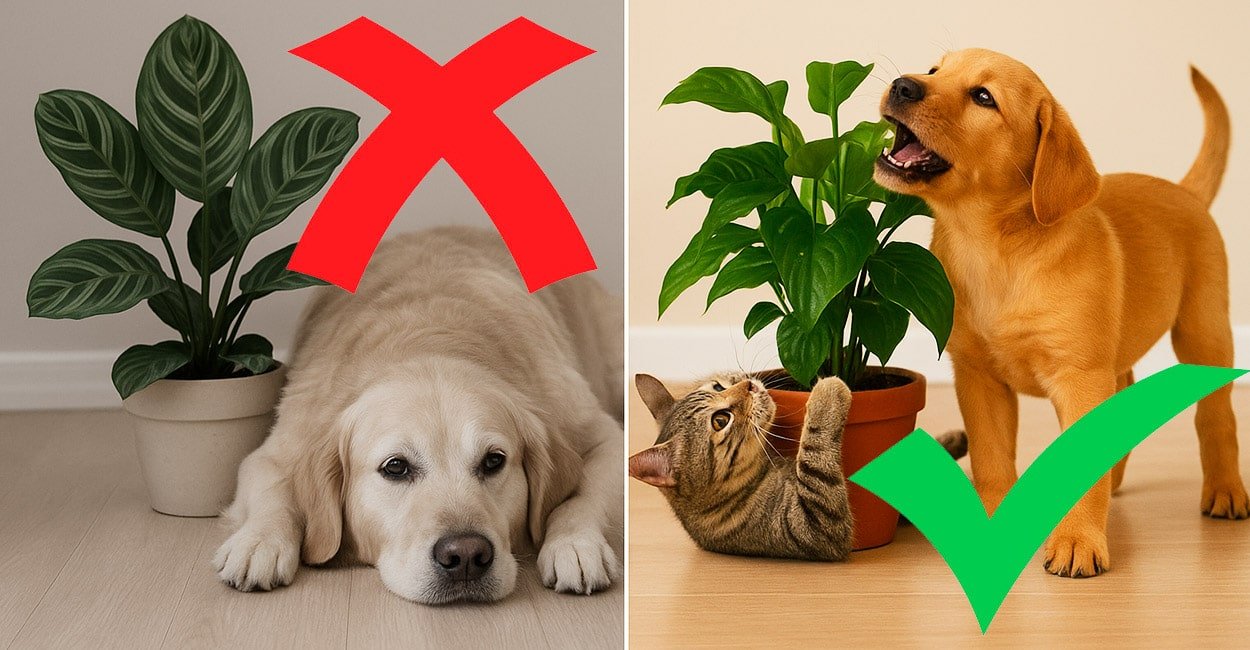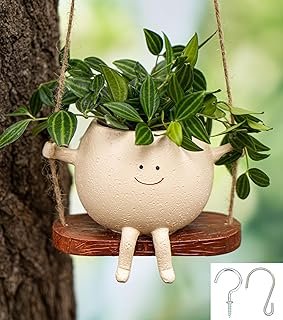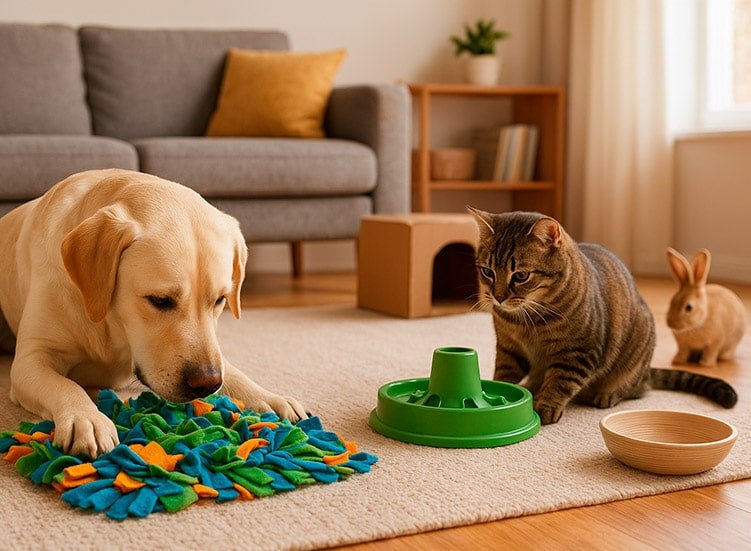Decorating your home with plants is one of the most accessible and beautiful ways to create a cozy, natural and elegant environment. However, when you live with pets, especially cats and dogs, an essential challenge appears: clearly understanding which plants fall into the category of toxic and pet-safe plants, since some species can cause irritation, vomiting, respiratory issues or even serious poisoning risks.
At the same time, many plants are completely safe and can even improve air quality, reduce stress and help create a healthier home for the entire family.
This complete guide was created to answer a very common and simple question:
Which plants can enter my home without posing any risk to my pets, and which ones should be avoided at all costs?
Below, you will find:
- Clear explanations about why some plants are toxic.
- A wide selection of dangerous species and their real effects on pets.
- Safe and decorative alternatives to replace any harmful plant.
- Tips on prevention, placement, coexistence and safety.
- Suggestions of helpful items such as air purifiers, tall stands and elevated planters.
Why understanding toxic and pet-safe plants is so important
Pets explore the world with their mouth, nose and paws, which puts them in direct contact with the plants inside your home. Many times, they bite leaves simply out of curiosity, trying to understand texture or taste.
In other situations, they end up licking the plant after drinking water that dripped into the saucer, or when flowers fall to the floor, some pets see them as toys and start playing with them.
There are also pets that like digging or scratching the soil in the pots, spreading dirt around the house, and during these interactions it becomes very easy for small parts of the plant to be ingested by accident, even without intention.
The problem is that many common houseplants have natural chemical defense mechanisms, which can cause irritation, allergies, vomiting and even more serious poisoning.
For this reason, knowing the difference between toxic and pet-safe plants is not only a matter of aesthetics or decoration; it is a choice that involves care, prevention and well-being inside your home.
Why are some plants toxic to pets? (Simple scientific explanation)
Every plant wants to survive. To protect themselves from insects, fungi and predators, many species developed chemical substances known as allelochemicals.
These substances do not harm the plant itself, but they can be dangerous for pets.
The most common toxins found in plants that are harmful to pets include:
- Calcium oxalate
Microscopic crystals that pierce the mouth lining and cause intense pain. - Saponins
Bitter compounds that irritate the digestive system and may cause vomiting and diarrhea. - Cardiac glycosides
They directly affect heart function. - Alkaloids
They can alter the central nervous system. - Highly concentrated natural essential oils
They may cause vomiting, irritation, allergies and general discomfort. - Cyanogenic glycosides
These plants release small amounts of cyanide when their cells are chewed or digested.
In high concentrations, this interferes with cellular respiration and in smaller exposures it can still cause gastrointestinal issues and weakness.
Typical symptoms: drooling, vomiting, rapid or difficult breathing, weakness, tremors and in severe cases, collapse.
All of this makes it clear that understanding the difference between toxic and pet-safe plants is essential for creating a beautiful and safe home.
Complete and explained list of the main toxic plants for pets
You will now see a detailed list of the most common toxic plants, many of them sold in garden centers and used in home decor.
For each species, I explain:
- Why it is toxic.
- Which symptoms it may cause.
- Why pets tend to be attracted to it.
1. Dieffenbachia (Dumb cane)
Danger: HIGH.
Toxin: calcium oxalate.
Why it is toxic:
The calcium oxalate forms sharp crystals that, when chewed, pierce the tongue and mouth lining.
Main symptoms:
- Intense pain.
- Drooling.
- Swollen tongue.
- Difficulty swallowing.
Why pets attack it:
Often out of playfulness or instinct, as the broad leaves catch their attention.
2. Lilies (all varieties)
Danger: EXTREMELY HIGH, especially for cats.
Toxin: alkaloids and highly toxic pollen.
Why it is toxic:
Even the pollen alone can cause acute kidney failure in cats. Lilies are considered one of the most dangerous plants for felines.
Symptoms:
- Vomiting.
- Lethargy.
- Rapid kidney failure.
Why pets attack it:
The soft scent and movement of the petals in the wind draw attention.
3. Snake plant (Sansevieria)
Danger: MODERATE.
Toxin: saponins.
Why it is toxic:
It causes gastrointestinal irritation when ingested.
Symptoms:
- Vomiting.
- Diarrhea.
- Lack of energy.
Why pets attack it:
The upright and rigid shape often triggers curiosity.
4. Pothos / Devil’s ivy (Epipremnum aureum)
Danger: HIGH.
Toxin: calcium oxalate.
Why it is toxic:
Even a small bite can cause burning and swelling.
Symptoms:
- Drooling.
- Oral irritation.
- Difficulty swallowing.
Why pets attack it:
The trailing, dangling leaves look like toys.
5. Monstera deliciosa
Danger: MODERATE.
Toxin: calcium oxalate.
Why it is toxic:
The plant releases irritating crystals when chewed.
Symptoms:
- Burning sensation.
- Swollen tongue.
- Mouth irritation.
Why pets attack it:
The large, textured leaves are visually stimulating.
6. English ivy (Hedera helix)
Risk level: HIGH.
Toxin: saponins.
Why is it toxic?
It can cause significant gastrointestinal irritation.
Symptoms:
- Vomiting.
- Diarrhea.
- Skin irritation.
Why pets chew on it?
It often grows as a trailing vine and is easy to reach.
7. Azalea
Risk level: HIGH.
Toxin: grayanotoxins.
Why is it toxic?
It affects the muscular and nervous systems.
Symptoms:
- Vomiting.
- Drooling.
- Weakness.
- Cardiac complications.
Why pets chew on it?
The colorful blooms often attract curious cats.
8. Kalanchoe
Risk level: HIGH.
Toxin: cardiac glycosides.
Why is it toxic?
It directly affects heart rhythm and cardiac function.
Symptoms:
- Arrhythmias.
- Vomiting.
- Tremors.
Why pets chew on it?
Its fleshy leaves have a slightly sweet taste.
9. Aloe vera
Risk level: MODERATE.
Toxin: saponins.
Why is it toxic?
The gel is beneficial for humans but can irritate the digestive system of pets.
Symptoms:
- Vomiting.
- Diarrhea.
Why pets chew on it?
The watery gel inside the leaves attracts their curiosity.
10. Hydrangea
Risk level: MODERATE.
Toxin: mild cyanogenic compounds.
Symptoms:
- Vomiting.
- Irritation.
- Lethargy.
Main symptoms of plant poisoning in pets
Understanding the reactions helps you identify problems quickly.
Most common symptoms:
- Excessive drooling.
- Repeated vomiting.
- Diarrhea.
- Loss of appetite.
- Swollen mouth.
- Watery eyes.
- Lethargy.
- Difficulty breathing.
- Tremors.
Veterinary emergency if you notice:
- Blood in vomit.
- Difficulty standing.
- Seizures.
- Rapid breathing.
- Arrhythmias.
Complete list of the main pet safe houseplants
Now let’s go through the best options to decorate your home without worrying about toxic and pet safe plants. These are the pet safe plants, with no relevant reports of toxicity for dogs and cats.
1. Areca palm
Why it is safe:
Contains no toxic substances.
Benefits:
Helps purify the air and grows well indoors.
Why pets love it:
Long leaves become visual toys.
2. Prayer plant (Maranta leuconeura)
Why it is safe:
Ornamental plant with no relevant toxins.
Benefits:
Leaves move with light, decorative and resilient.
Cultural note:
Often called “prayer plant” because the leaves fold at night.
3. Calathea
Why it is safe:
Contains no irritating compounds.
Benefits:
Excellent air purifying capacity.
4. Peperomia
Why it is safe:
The entire Peperomia family is considered safe.
Benefits:
Small and charming leaves, highly decorative.
5. African violet
Why it is safe:
Non toxic for pets.
Benefits:
Delicate flowers in many colors.
6. Lucky bamboo (Dracaena sanderiana)
Important: traditional Dracaena species are toxic, but the lucky bamboo sold in water is considered safe when it is the genuine species.
Benefits:
Widely used in feng shui.
7. Lady palm (Rhapis excelsa)
Why it is safe:
No known toxic compounds.
Benefits:
Perfect for living rooms, hallways and shaded areas.
8. Boston fern
Why it is safe:
Contains no harmful substances.
Benefits:
Classic and elegant look for indoor décor.
9. Fittonia
Why it is safe:
Ornamental plant with no irritating substances.
Benefits:
Ideal for terrariums and low arrangements.
10. Pilea peperomioides (Chinese money plant)
Why it is safe:
No relevant toxicity reported.
Benefits:
Great for modern and minimalist décor.
Quick comparison between toxic and pet safe plants
Toxic plants:
- Contain crystals, alkaloids or saponins.
- Cause irritation, vomiting and poisoning.
- Attract pets due to texture and color.
Pet safe plants:
- Contain no relevant toxins.
- Help improve indoor air quality.
- Can be used freely in home decoration.
This contrast is essential to make smarter choices.
How to create a beautiful home using only pet safe plants
- Choose larger non toxic plants to fill strategic corners.
- Prefer plants that also help purify the air.
- Combine pet safe plants with indirect light, light colored furniture and natural textures.
- Use self watering pots to prevent pets from digging in the soil.
- For trailing plants, use high shelves.
If you choose any moderately toxic species, place them on high shelves or hanging supports to keep them out of reach. Also pay attention to where the plant is located, because even when placed up high, fallen leaves can still reach the floor.
Tips to keep toxic plants away from pets if you truly want to keep them
If you insist on keeping some toxic plants at home, it is essential to adopt strategies to prevent your pet from having direct contact with them. One of the simplest methods is to use hanging pots placed at truly high points where the animal cannot reach.
Another safe and aesthetically pleasing option is to invest in decorative glass cases, which protect the plant without compromising the overall decor.
Some pet owners also like to create a scent barrier around the pots using natural repellents, such as citrus aromas or the smell of coffee, which many animals tend to avoid. Additionally, offering toys that are more interesting than the plant itself often helps redirect the pet’s attention. Keeping the environment clean is also crucial, since fallen leaves increase the risk of accidental ingestion and should be removed immediately.
🌿 How to keep toxic plants away from pets using hanging pots
Even after understanding the difference between toxic and pet safe plants, many people still want to keep certain species from the toxic list, either because they love their aesthetic or because they have owned the plant for years. In these cases, the best strategy to keep your home both beautiful and safe is to use elevated supports or hanging planters installed at a height that the pet cannot reach.
Hanging pots are simple and affordable solutions that prevent cats and dogs from chewing on leaves, playing with the pot or coming into contact with the sap. They also improve ventilation, drainage and the overall decor of the home.
👉 Click here to view this product on Amazon.
You can use it both on balconies and indoors, attached to ceiling hooks or wall mounted supports. This way, plants like pothos, peace lilies or dumb cane, which range from moderately to highly toxic, can be kept out of reach of curious pets, significantly reducing the risk of ingestion or direct contact.
❓ FAQ about toxic and pet safe plants
Check whether it contains calcium oxalate, saponins, alkaloids or cardiac glycosides. These substances often cause irritation, vomiting and poisoning in pets.
Yes, as long as you choose pet safe plants such as calathea, peperomia, prayer plant and areca palm.
Contact a veterinarian immediately and, if possible, bring a small piece of the plant for identification.
Calathea, maranta (prayer plant), pilea, peperomia, African violet and areca palm are among the safest options.
Conclusion about having toxic and pet-safe plants
Understanding the difference between toxic and pet-safe plants is the first step to creating a beautiful, green and fully safe home for your animals.
With the right species, or with proper precautions and knowledge, it is entirely possible to combine aesthetics, nature, well-being and protection without giving up your style or taking risks.
If this guide helped you, share it with someone who also loves pets and plants.
 Recommended reading on Tudum Blog
Recommended reading on Tudum Blog
If you want to learn more about caring for and protecting your pet, we suggest reading our other article: GPS Dog Tracker, Complete guide to choosing the best model
Click here for more content about the pet world.








